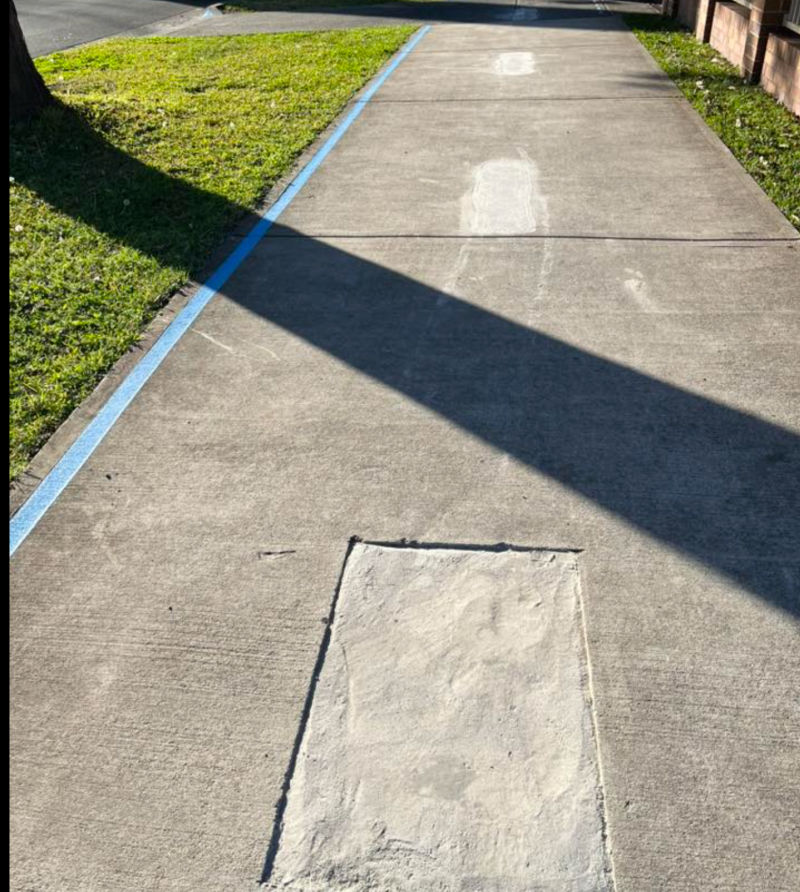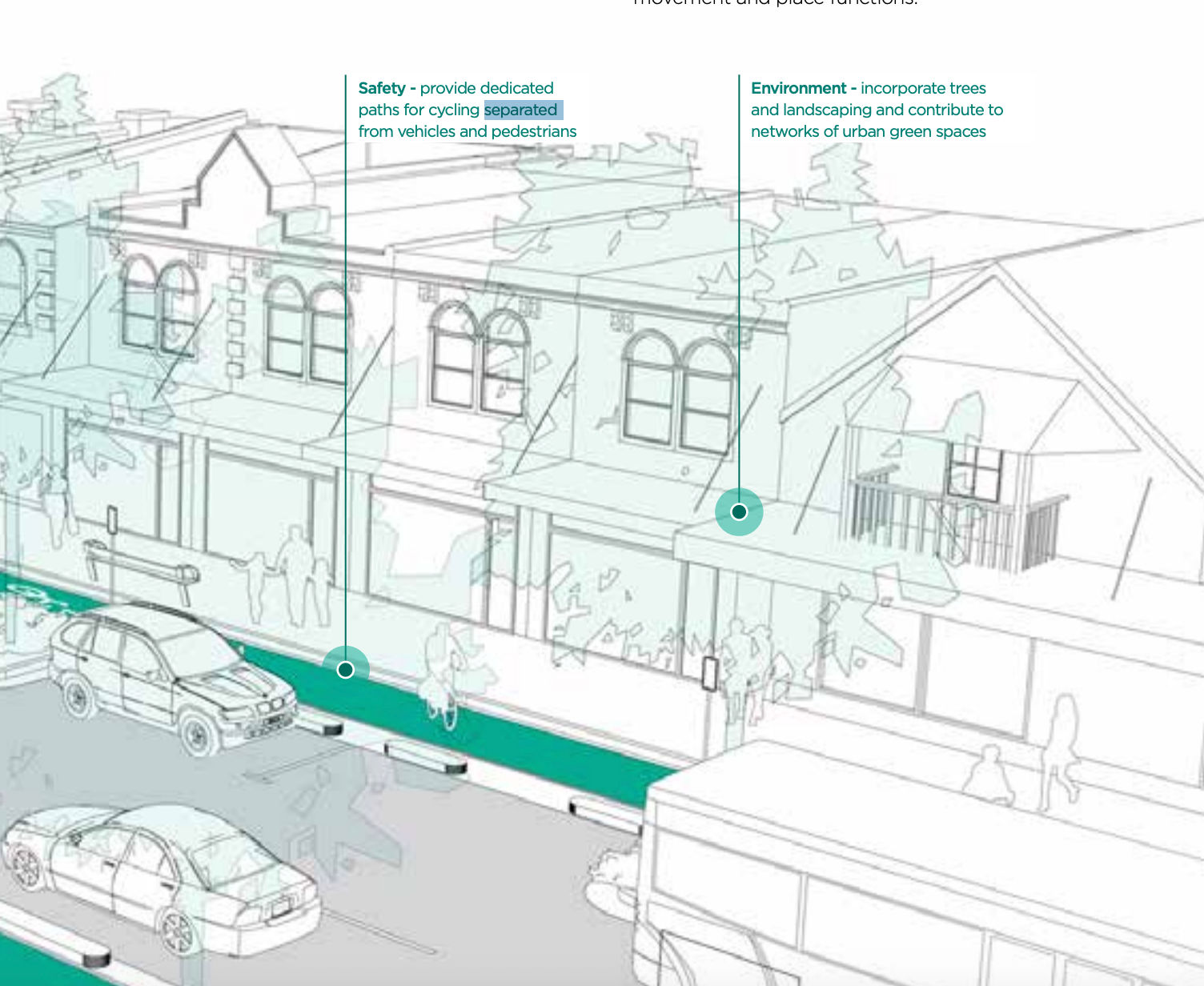
If you’ve noticed the blue lines painted along the footpath in Riverview, expect to see more soon as Lane Cove Council adopts these markings to indicate that a footpath is a Shared User Path.
The lines, first described to ITC by residents as an “eyesore”, were noticed spanning about 1km of footpath from Yorks Corner on Hamilton St to Riverview St.
This stretch of Tambourine Bay Road was already a shared user path before the blue lines mysteriously appeared without any warning to residents. The markings on the path included a dotted centreline. The centreline has been erased. Residents have complained that, as a grinder was used to remove the markings, the path now appears unsightly, with some uneven patches.
What is a Shared User Path?
Shared paths are designated for use by both bicycle riders and pedestrians.
On shared paths, bicycle riders must:
- keep to the left (unless it’s not practical).
- give way to pedestrians. This means slowing down and, if necessary, coming to a complete stop.
- keep to the left of any oncoming bicycle rider.
Riders of skateboards, foot scooters and rollerblades must:
- keep to the left (unless it’s not practical)
- give way to all other pedestrians.
It is legal for adults to ride their bikes on footpaths on a Shared User Path.
Are Electric Bikes Allowed on Shared User Paths?
Legal Electric Bike Riders are permitted on Shared User Paths.
There are two types of legal e-bikes:
- Power-assisted pedal cycles
- Electrically power-assisted cycles.
The rider must primarily propel these bikes – a motor can’t be the only source of propulsion. The motor should only help the rider, like when going uphill or facing strong winds.
E-bikes and pedestrian safety have been under the microscope recently.
A new study commissioned by the Victorian Automotive Chamber of Commerce (VACC) has found widespread non-compliance among commercial delivery e-bikes in inner Melbourne, raising safety, regulatory, and enforcement concerns.
The research was conducted by Monash University, covering eight high-activity sites in May 2025, observed more than 27,000 two-wheeled vehicles, nearly half of which (47%) were delivery e-bikes.
The findings reveal:
- Only 4% of delivery e-bikes were observed pedalling – suggesting many are throttle-powered or modified beyond legal specifications.
- Speeds up to 54 km/h were recorded, with almost one in five exceeding 25 km/h; at some sites this rose to one in three.
A recent article in the Conversation about Ebikes being accepted as an alternative form of transport noted:
“E-bikes are quietly revolutionary. Once the e-bike sector is properly regulated, authorities should focus on making the most of their potential.
Separated lanes are vital and are especially important for e-bike riders, who can travel faster and may be more at risk of injury if they crash compared to traditional bikes.
Temporary subsidies are another option to drive uptake. Researchers overseas have shown the benefits from e-bike subsidies outweigh the cost.
If we do this right, millions of Australians could eventually rely on an e-bike rather than a car.”
ITC spoke to one of the Researchers who wrote the article, and he noted that all ebikes should be on separate bike paths – see the example of a separate bike path below.
Why Are Blue Lines Being Painted on Shared User Paths?
Lane Cove Council have stated the markings are to clearly identify areas intended for shared use by pedestrians and cyclists.
The rollout follows a recommendation from Transport for NSW for local governments to help shift the attitudes of both cyclists and pedestrians towards the concept of shared pathways.
Through this adopted initiative, Council said they will be replacing older markings with a more “modern, consistent, and safer approach to guiding footpath and cycle path users”.
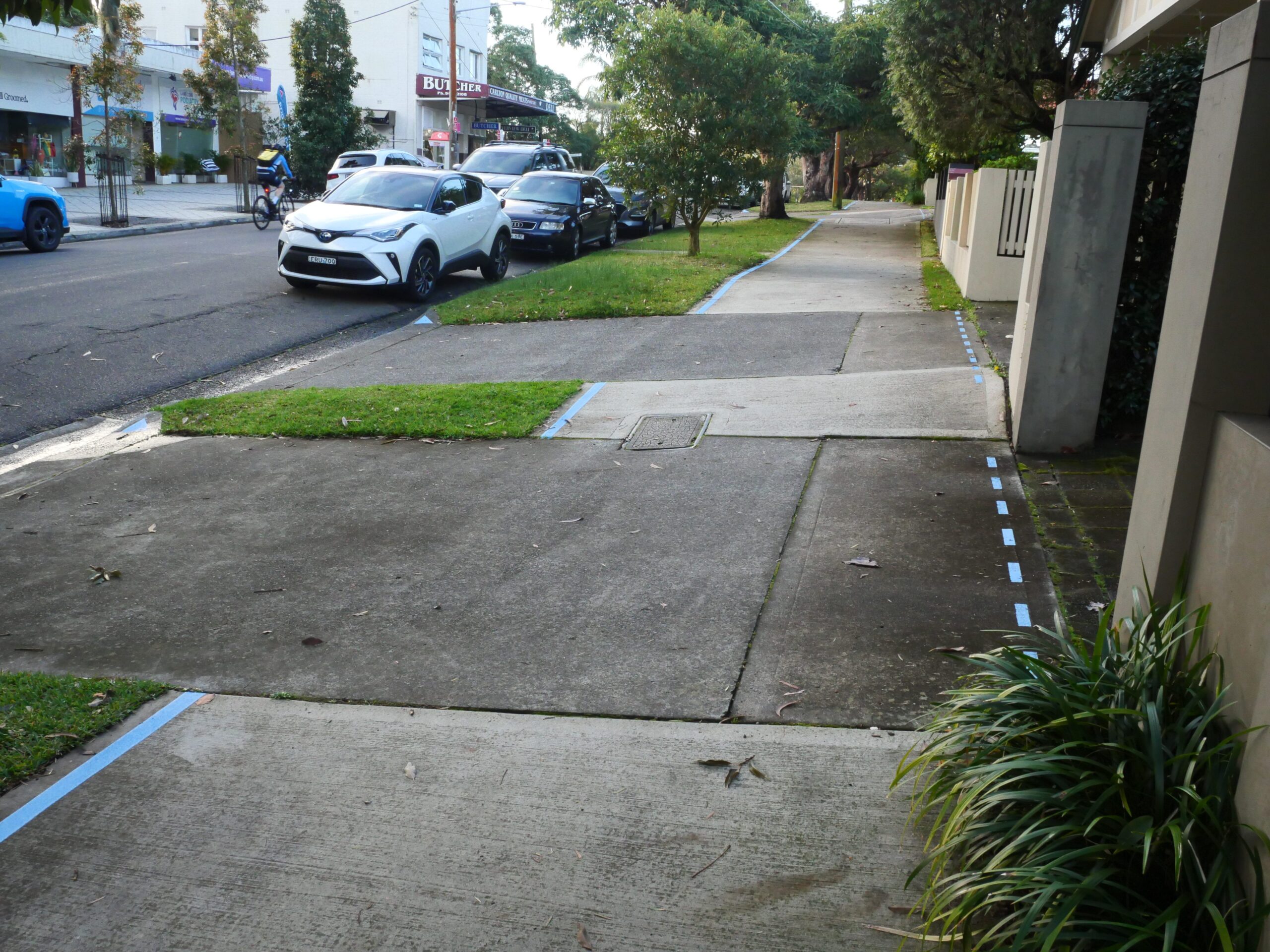
Who Developed the Blue Line Theory?
ITC’s investigations revealed that the City of Sydney was the first council to develop the blue line concept.
A City of Sydney spokesperson told ITC:
“We developed guidelines for the roll out of our shared path pavement markings and understand other councils have subsequently adopted our approach.
Our guidelines are also referenced in the Transport for NSW cycleway design toolbox.
These markings improve awareness of the shared paths and help guide the behaviour of everyone using these areas.
This is not regulatory signage. Questions regarding road rules and speed limits should be directed to the NSW Government.”
A Transport for NSW Spokesperson told ITC:
“Transport has not changed its rules or guidelines regarding the use of coloured road markings for shared paths but acknowledges and references the City of Sydney’s Shared Pathways Pavement Markings Guide as part of the Cycleway Design Toolbox. Transport currently typically uses white markings to denote shared path facilities.
No separate speed limits have been proposed specifically for e-bikes on shared paths. Instead, e-bike riders must follow the posted speed limits and general road rules that apply to bicycles.
Shared paths may have speed signage (e.g. 10–20 km/h), especially in high pedestrian areas. E-bike riders are required to comply with these signs, just like traditional cyclists.
The NSW Government recognises the increasingly important role e-micromobility devices will play in the future of public transport.”
The July 2025 Updated Transport for NSW Delineation and Pavement Marking Standard, which aligns with Australian Standard AS 1742, sets out the requirements for road markings. The standard doesn’t include specific references to blue markings on shared paths.
Transport for NSW has developed a Cycleway Design Toolbox that provides additional design guidance regarding shared paths. The Toolbox notes that blue is used by the City as the primary unifying signifier of the Shared Path network on their infrastructure.
What Other New Markings Indicate a Shared User Path?
Other symbols and markings will also be used to indicate a shared bike path, which are placed in a three-tiered system.
The primary tier will ensure all shared paths have mandatory shared path markings, line markings, symbols and text elements.
- Shared path pavement marker to denote the start of a shared path.
- A typeface for identifying locations or communicating simple behavioural messages.
- Smaller-scale pedestrian and cyclist symbols for general use along the Shared Path.
- A blue edge line denoting the shared path route.
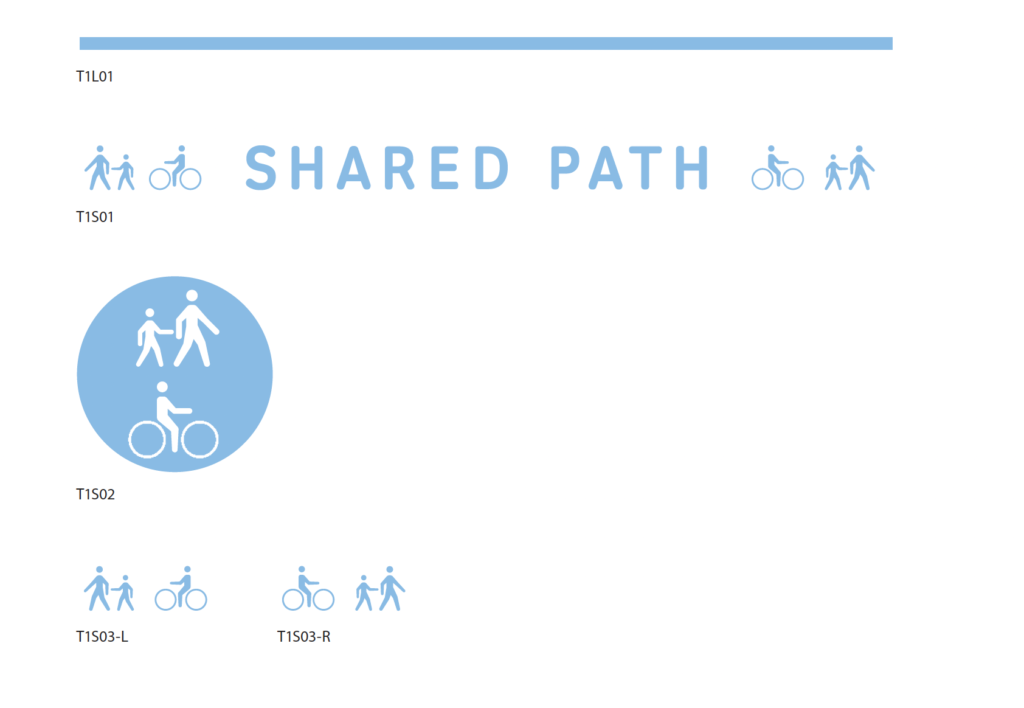
The secondary tier will have symbols to manage areas perceived to be of higher risk, such as driveways and bus shelters.
This includes triangles painted on adjacent edges of driveways as well as dotted blue lines pointing to a property’s boundary line.
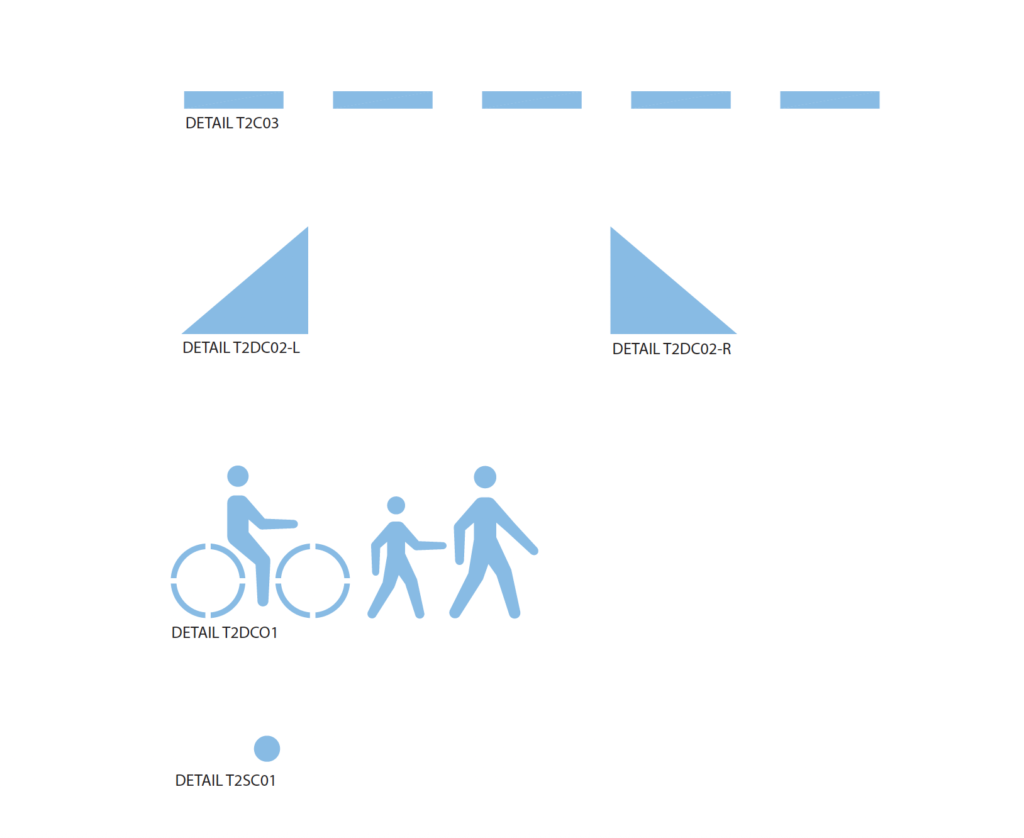
And the third tier is to implement symbols, such as caution and slow down signs, where necessary in areas with “occasional points of risk”.
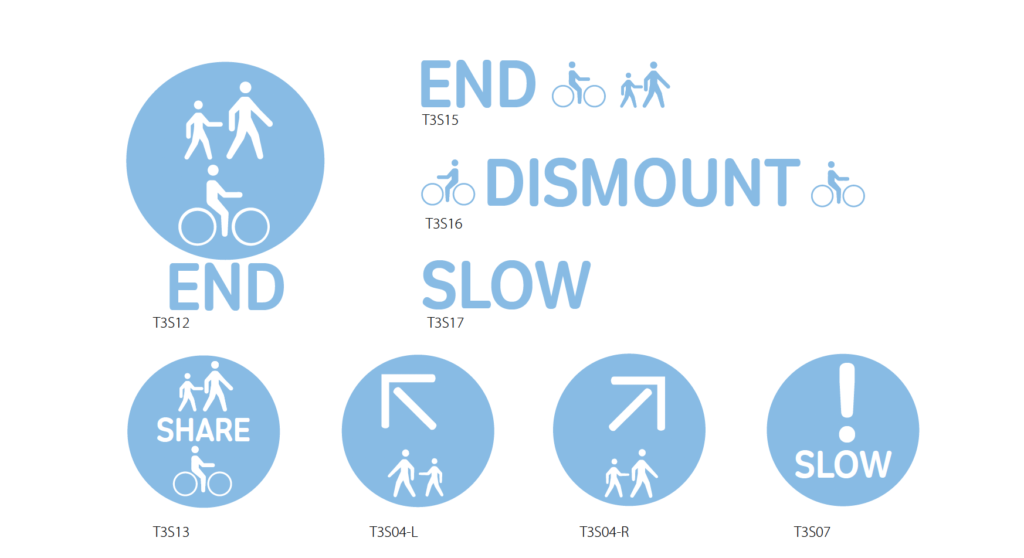
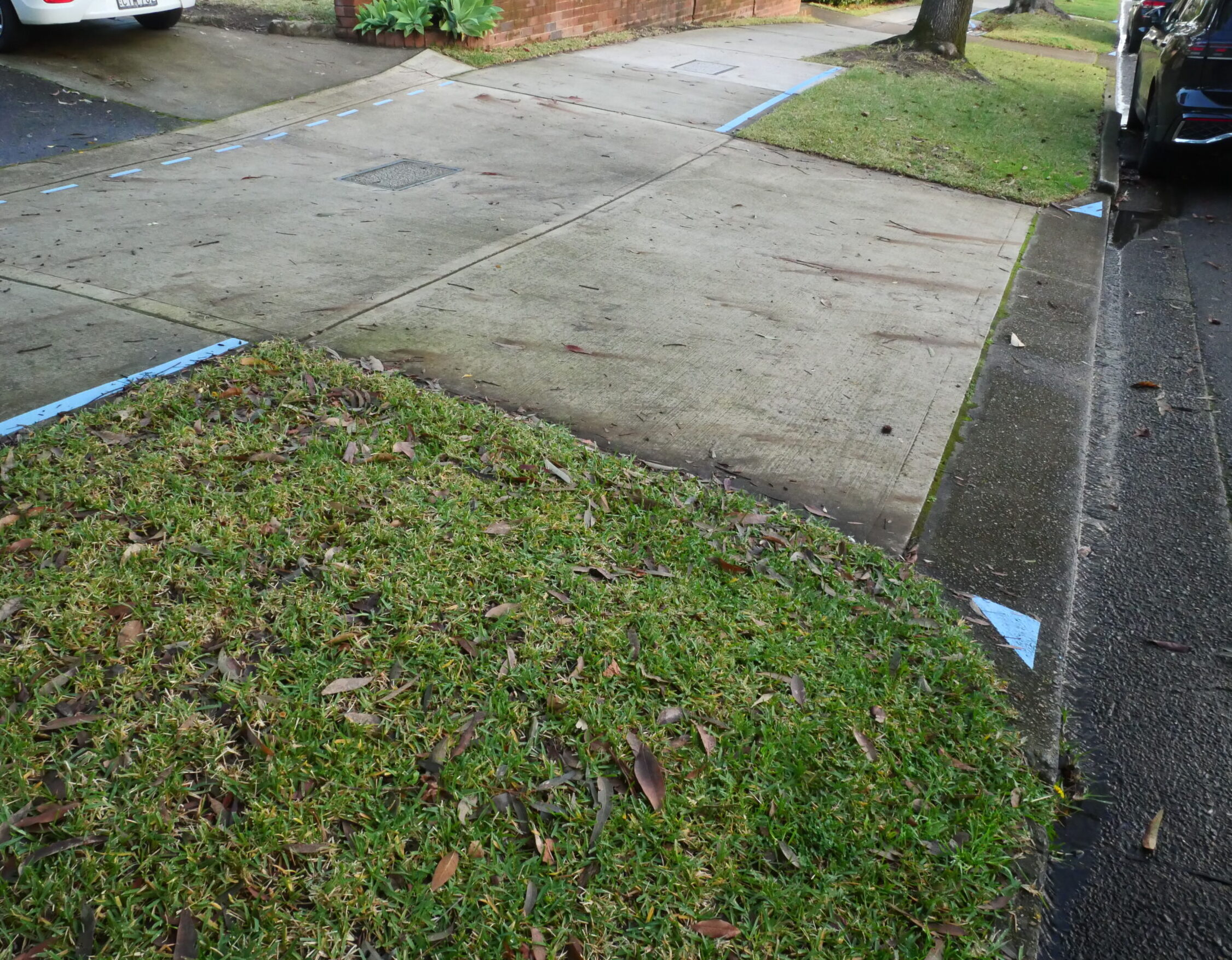
Some residents who now have blue lines bordering their driveways expressed disbelief that there were no community consultations regarding the decision. The council said that generally, no formal consultation is needed if traffic and roadwork don’t impact parking or road access, comparing the works to a standard road line marking upgrade.
However, the new line marking system was discussed at the Lane Cove Bicycle Advisory Committee, which strongly supported the new blue line markings.
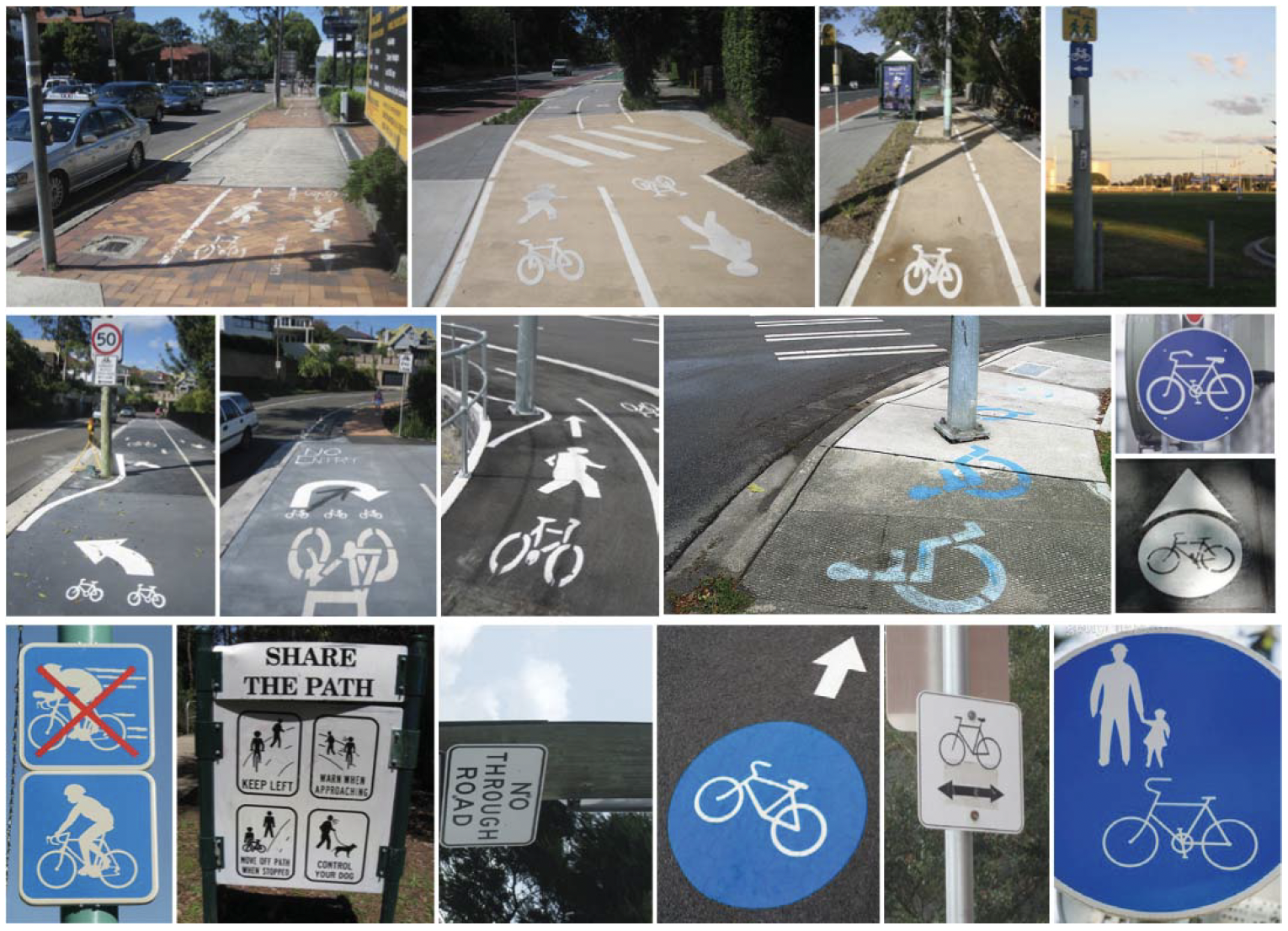
The new markings are said to provide more precise guidance for all users, safer shared path navigation, less visual clutter than previous markings and more consistent and user-friendly signage across different locations.
Why Was the Centreline Removed?
In 2015, the Transport for NSW Centre for Road Safety released a paper titled “Shared User Paths: Discussion of Research Findings and Key Safety Issues.”
The report included the following paragraph on Centrelines:
“The aspect of shared path design/infrastructure that has received most research attention is the presence of a centreline. The literature review identified centreline delineation as effective in increasing left-hand travel, as well as lowering cyclist speeds. The review cited research conducted in Sydney which found 93% of both cyclists and pedestrians kept left on shared paths with a centreline. This positive association between centre-line delineation and left-hand travel was upheld in the local observational study which found that after statistically controlling for other factors, centrelines were independently predictive of left-hand travel. However, centreline delineation was also associated with higher cycling speeds in the observational study. This finding represented a departure from the existing evidence, which had identified a negative association between a centreline and speed.”
Who is responsible for patrolling the area and fining riders who use motorised Ebikes on Shared User Path?
In July 2025, a month-long operation in Sydney’s Northern Beaches saw NSW Police cracking down on illegal e-bikes.
Traffic and Highway Patrol Command’s North Sydney Sector officers conducted six deployments, as part of Operation Kilowatt, focusing on high-visibility enforcement, education, and community engagement at Avalon, Manly, and Dee Why.
Police conducted 305 e-bike compliance checks, with 28 illegal e-bikes identified. The illegal e-bikes did not comply with current legislation because they had been modified or adjusted.
Police issued 32 penalty notices for various offences, including not wearing a secured helmet or using a mobile phone while riding.
There were 29 warnings given to young people under 14. Twenty Nine riders aged over 14 were issued with official warnings under the Young Offenders Act. More than 30 people aged over 18 were given cautions.
This coincides with similar operations run over the past 12 months, with police deployed to Cronulla, Manly, and Bondi and other locations across the state to educate young people and adults about the dangers of riding illegal and modified e-bikes.
Across the state there have been two fatalities involving e-bikes in the past two years.
Traffic and Highway Patrol Commander, Assistant Commissioner David Driver, said police were aware e-bikes had significantly grown in popularity and some members of the community had raised concerns about them.
“Specific e-bike enforcement operations are conducted in addition to regular patrols. These efforts include enforcement and a focus on educating riders about the difference between legal and illegal e-bikes,” Assistant Commissioner Driver said.
The Blue Lines Are Here to Stay
Lane Cove Council also said:
“Council ensures the system meets all required legal standards while improving both the function and look of public shared spaces. They will be updating their website to provide information on this, so it is clear for the community.”
Help ITC to Keep Providing Free Local News in 2025
The link to support us is here.

Thank You
Thank you to the In the Cove team, our advertisers, roving reporters and everyone who stops our founder, Jacky Barker, on the street and tells her how much In the Cove has helped them learn more about where they live.


